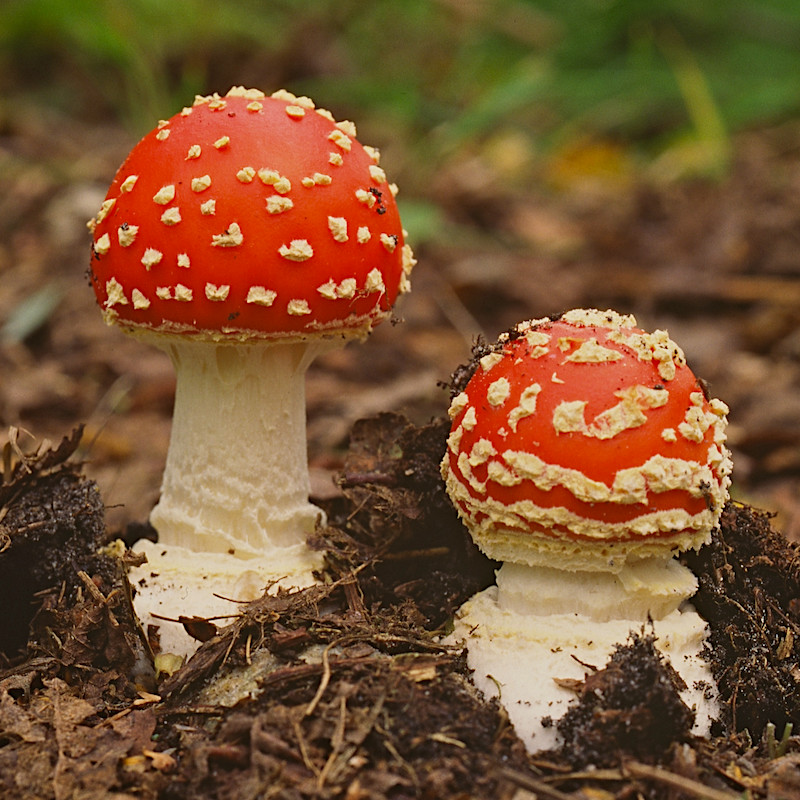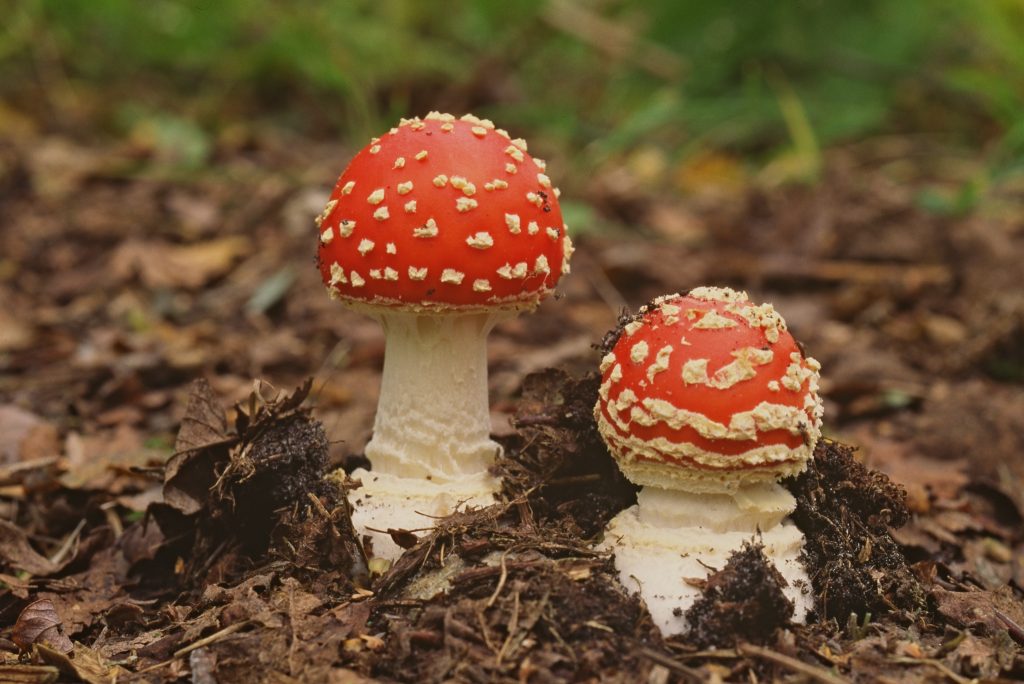
It’s the picturebook ‘pixie toadstool’ – and there’s lots of it about in the autumn. Look for it in woodland.
Photo: © Natural England/Peter Wakely
Scientific name: Amanita muscaria
Other common names: Fly Amanita, Bug Agaric
Cornish name: The general name for a mushroom is skavel gronek
What to look for:
• Appearance: Up to 30 cm tall. Distinctive red, white-spotted cap, 5 to 20 cm across, striated at the margin. The gills are white. The stalk (stipe) is bulbous and woolly in appearance.
• Spores: White, elliptical to subspherical..
• Where: Mainly in woodlands; most usually associated with birch, but also with other broadleaf and conifer species.
• When: The fruiting bodies appear in late summer to early winter.
• Similar species: There is more than one subspecies of Amanita muscaria. The classic red toadstool, and the one most recorded, is var. muscaria; the much rarer var. formosa has a more yellowish-brown stem and cap; and var. aureola has an orange-yellow cap. Amanita muscaria might also be confused with A. rubescens (common name, the Blusher), which has a less vibrantly red cap, and cream rather than white spots.

The storybook toadstool. It’s the mushroom that Alice famously ate in Wonderland, and has featured in fairy stories from across the northern world. It’s hard to think of the vividly red, white-spotted Fly Agaric without also imagining a pixie sitting on its cap. Perhaps those fairytale stories arose in days gone by when folk tasted one of these distinctive fungi. Definitely not to be eaten, the Fly Agaric is famed for its hallucinogenic properties, and is classified as poisonous, although only very rarely causes death in humans after ingestion.
Its common name is perhaps not as romantic as its fairytale status might suggest, but is derived from a traditional use. Fly Agaric contains ibotenic acid, a substance that attracts flies but which is lethal to them. People used to use the mushroom as an insecticide by placing crushed fragments of the cap in a saucer of milk.
The fruiting bodies appear in the leaf litter woodland from late summer and into early winter. The species has mainly been associated with birch, but is now recognised as having associations with other broadleaf trees and conifers, forming symbiotic mycorrhizal relationships. Native to the northern hemisphere, Fly Agaric has more recently been introduced to Australia and New Zealand on pine seedlings, where it is increasingly considered an invasive species, given concerns it is displacing native species.
Did you know…?
…The insecticidal ibotenic acid, and another compound, muscimol, are the psychoactive constituents of Fly Agaric. The toadstool has had a shamanistic function in some cultures across the temperate northern world, with its hallucinogenic properties believed to enhance spiritual experience.
…The species name muscari is derived from the Latin musca, meaning fly.
…The white spots are the remnants of a ‘universal veil’ (a temporary tissue covering the immature fruiting bodies), often disappearing with age.
More information and references:
Buczacki, S., Shields, C., Ovenden, D., 2012. Collins Fungi Guide. Collins, London.
Published: October 2018
Author: Amanda Scott
Photos: © Natural England/Peter Wakely
